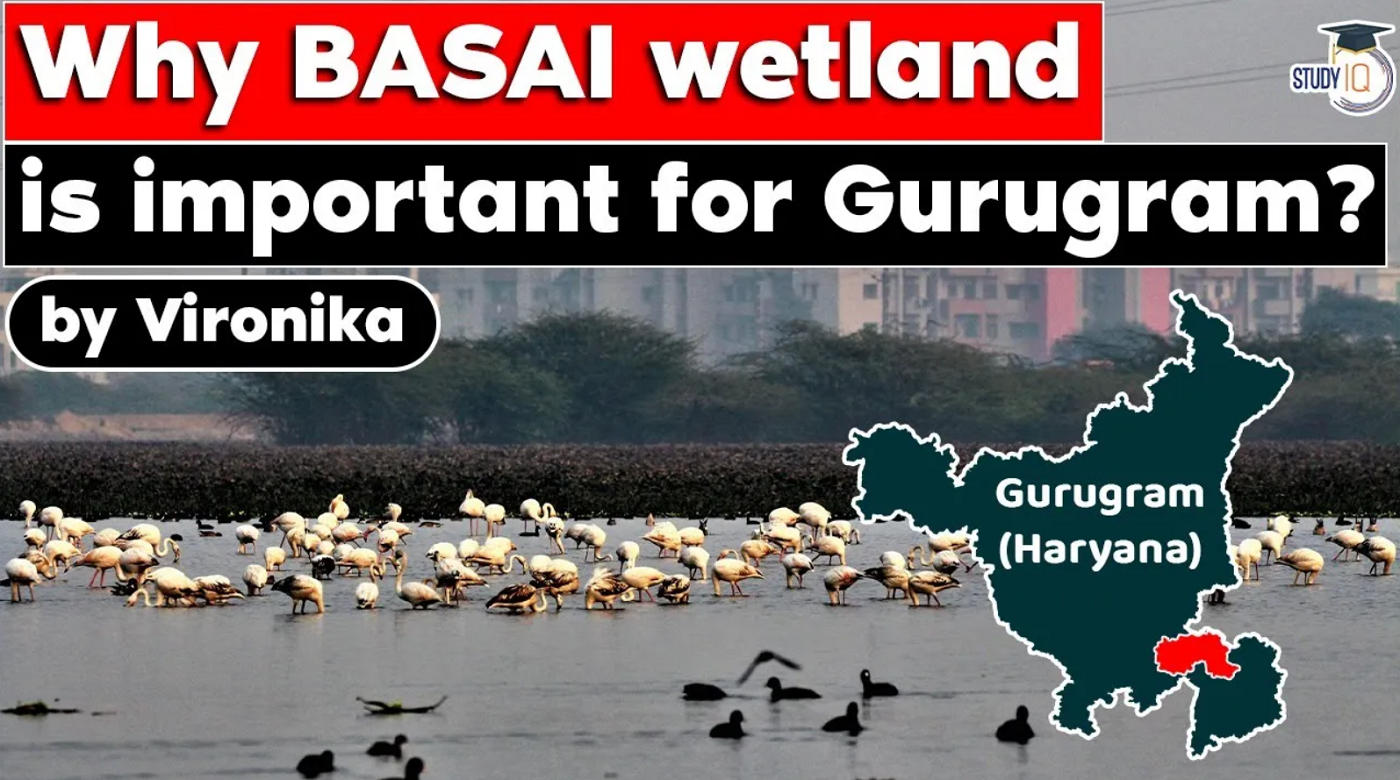Table of Contents

- The 250-acre shallow wetland has shrunk to a quarter of its original size over the years. Home to 300-plus species of rare, common and migratory birds, Basai is recognised as a key biodiversity area by the International Union for Conservation of Nature (IUCN), the Wildlife Institute of India and the BirdLife International, a global network of NGOs that work to protect bird habitats.

- But for the town planners, urbanisation is out of sync with environment and the Haryana government is yet to declare the site a protected refuge for birds.

- Given the accelerated expansion of the city of the future, the wetland continues to disappear under newly laid roads, modern housing constructions and other infrastructure development.
- An upcoming expressway, cutting through the terrain here, has majorly impacted the flyway of thousands of migratory birds from Europe and Central Asia.
- Till a decade ago, the Basai wetlands was a top birdwatching destination where the Bombay Natural History Society (BNHS) had documented 281 species of avian population.
- But the number of species has steadily declined with each passing year, according to Pankaj Gupta of Delhi Bird Foundation.
- He led a few citizens the legal way to the National Green Tribunal when the installation of a construction and demolition waste processing and recycling plant added to the mess. But it continues to spew cement dust and gradually choke the area.
- Gajinder Bains has been bird watching at Basai since 1980s. He mentors amateur birdwatchers now and was at the site three months ago for the annual count. Both species and population of birds have dwindled but they are still coming in hopeful numbers; the birding area has so far managed to co-exist with the ongoing destruction and pressures on the land.
- But they need to prevent further encroachment with immediate action if we want to save Gurugram’s bird paradise
WHAT’S THE PROBLEM?
Lack of awareness
- The problem is lack of awareness about the history and importance of wetlands among the people. The marshy wilderness is seen as wasteland to be dumped with garbage said Neha Dara of Roundglass Sustain, an initiative of like-minded individuals creating awareness about India’s biodiversity.
- Ultimately, it would be to the peril of the residents when the threat of water scarcity, receding groundwater table, flash floods during heavy rains and the sight of depleting greenery from their high-rise windows turn into a bitter reality.
- In an attempt to sensitise the local residents and build a citizens’ movement, film and TV director-producer Chandramouli Basu made a short film — Why We Must Save Basai’s Bird Paradise. Released in time to mark the World Wetlands Day on February 2, the six-minute film highlights the need to value Basai’s waterbodies.

- Basu made more than three dozen trips during different seasons to the Basai wetlands last year. “I parked myself for hours at different vantage points during different times of the day to capture the beautiful winged visitors.
- Birders and wildlife photographers who came to the site shared with me how the vital ecosystem was slowly getting destroyed with increased construction activity all around
- Compiling the annual sightings of individual birders, e-bird.org — the go-to repository of birds — has listed several varieties of birds, including the bar-headed goose, flamingos, grey-headed swamphen, cattle egret, black bittern, yellow-bellied prinia, grey-headed lapwing, watercock, white-rumped vulture, wood sandpiper, smoky warbler,
- Basai wetlands in 2020-21. Ornithologists note Basai shelters 60% of the total bird species seen in the National Capital Region.
WORLD’S WETLAND DAY

- Union Minister for Environment, Bhupender Yadav, addressed the national level celebration of World Wetlands day 2022 held at Sultanpur National Park, a Ramsar site of Haryana.
- World Wetlands Day is observed every year on February 2nd all over the world.
- It is celebrated to raise global awareness about the vital role of wetlands for people and our planet.
- This day also marks the date of the adoption of the Convention on Wetlands on February 2, 1971, in the Iranian city of Ramsar.
- Two new Ramsar sites (Wetlands of International Importance), Khijadia Wildlife Sanctuary in Gujarat and Bakhira Wildlife Sanctuary in U.P were also announced on the occasion by Shri Yadav.
- India now has a network of 49 Ramsar sites covering an area of 10,93,636 hectares, the highest in South Asia. Bakhira Wildlife Sanctuary in UP provides a safe wintering and staging ground for a large number of species of the Central Asian Flyway.
National Wetland Decadal Change Atlas
- On the occasion, “National Wetland Decadal Change Atlas” prepared by the Space Applications Centre (SAC), Ahmedabad was also released highlighting the changes which have happened in Wetlands across the country in the past decade.
- The original Atlas was released by SAC in 2011 and has over the years been used extensively by all the State Governments also in their planning processes
- The Ramsar Convention isan intergovernmental treaty that provides the framework for national action and international cooperation for the conservation and wise use of wetlands and their resources.
- The countries with the most Ramsar Sites are the United Kingdom (175) and Mexico (142), as per the Ramsar List. Bolivia has the largest area with 148,000 sq km under the Convention protection.
Question:
Which of the following wildlife sanctuary is added as new Ramsar sites in their list?
(a) Sariska National Park
(b) Keibul Lamjao National Park
(c) Khijadia Wildlife Sanctuary
(d) Periyar Wildlife Sanctuary
Latest Burning Issues | Free PDF


























 WhatsApp
WhatsApp